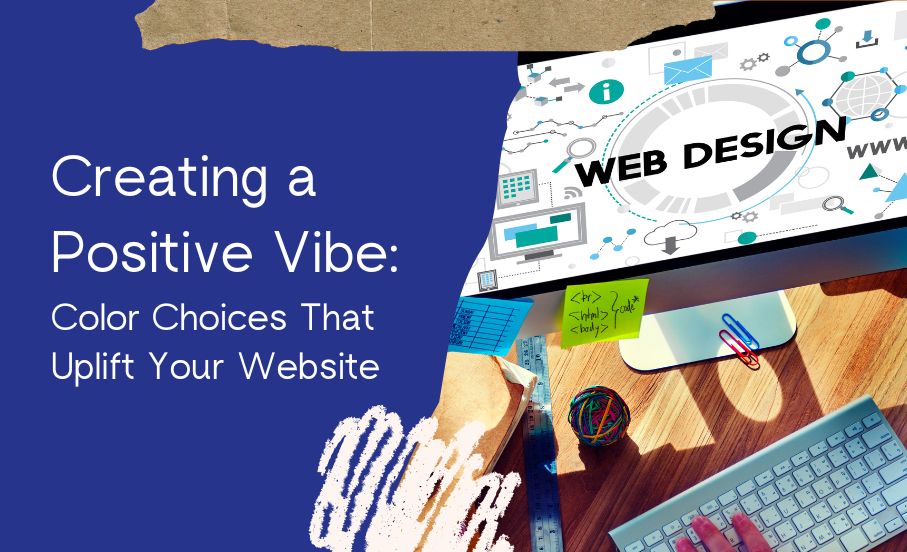Our life depends fundamentally on colour. It sets the tone, arouses feelings, and shapes our attitude. Therefore, how a brand is seen can be much influenced by the colours you choose for a website. Today, we will explore positive colours’ impact on web design company and how you might inject optimism into your work.
Why, In Web Design, Do Positive Colours Matter?
Design’s optimism and positivity go much beyond mere aesthetic decisions. These components have a practical use that influences brand impression and user behaviour. Positive UX (user experience) encouraged by optimistic design increases engagement and could result in possibly better metrics. A more inviting design helps users stay longer and interact more with the content. Good design affects user psychology, producing an emotional reaction connected with a brand.
Strategic Use of Colour Psychology in Website Design: Target Audience Study
Selecting a colour scheme calls for an awareness of the target audience. Age, gender, and cultural background will all affect how different demographics react to colours. A deep understanding of the audience facilitates the choice of colours that appeal to them, thus improving the effectiveness and attractiveness of the website.

Cultural Considerations
Different civilisations have rather different ideas about colour perception. For instance, although white is connected in Western cultures with purity and weddings, it is usually associated with sadness in some Eastern civilisations. These cultural variations in colour perception should be considered when designing websites for readers worldwide.
Combining Colours and Schemes
Choosing the appropriate colour scheme requires knowledge of colour theory and the psychological impacts of colour combinations, not just taste. One can use complementary, analogous, or triadic colour schemes to establish visual harmony and balance, so rendering the website aesthetically pleasing and psychologically powerful.
In website design, colour psychology shapes user experience and interaction. Various colours greatly influence user experience, transmit messages, and arouse different feelings. Here, we will discuss the psychology underlying different colour schemes and combinations and how best to apply them in web design.
Blue: Calms and Trust
Psychology: Blue is usually connected with professionalism, calmness, and confidence. This is a favoured colour for corporate and informational websites where confidence is critical. Perfect for social media, banking, healthcare, and design.
Visual Example: Consider a banking website’s header featuring a blue gradient from light to dark to inspire confidence and security.
Orange: Friendliness and vitality
Psychology: Orange stands for warmth, energy, and creativity since it combines the happiness of yellow with the intensity of red. Though less forceful than red, it nonetheless attracts attention.
Designed for call-to-action buttons, kids’ websites, and leisure activities. Visual Example: Against a soft, neutral backdrop, a vivid orange “Subscribe” button on a lifestyle blog invites but not dominates.

Putting the Colour Pieces Together
A good colour combination depends on contrast. Match a warm or fresh colour with a softer, subdued tone. This helps you to foster optimism without overwhelming the design with too many vivid colours.
For example, a warm orange accent might be matched with softer beige or cream tones to create a warm and inviting colour scheme. On the other hand, combining a brilliant green with a softer blue will inspire ideas of development and peace for brands trying to exude freshness and energy.
Keeping Current with Trends
Although knowledge of colour psychology concepts is crucial, keeping current with design trends is also vital. To guarantee the website stays appealing and functional over time, designers should aim for a mix of trendiness and timelessness.
In website design, colour psychology shapes user experience, interaction, and general site efficacy. Understanding the emotional and behavioural effects of colours helps designers create more powerful and user-friendly websites. Using strategic application, meticulous study of the target audience, and adherence to best practices, the power of colour can be utilised to improve website design and realise corporate objectives.
Conclusion
In web design, choosing good web design company colours is mostly about knowing the brand, knowing its audience, and evoking the appropriate feelings. Strategic colour matching can increase the attractiveness of your design regardless of the colours—softeners or vivid ones.
